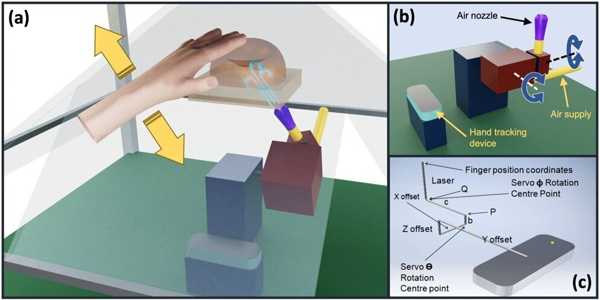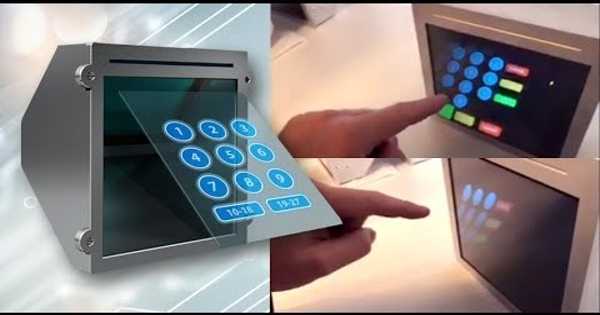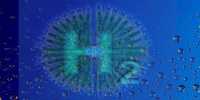Tactile technology that generates haptic feedback has been used in entertainment (such as game controllers), rehabilitation therapy, and even surgical training for many years. Touch is used in haptic feedback to communicate with users. “The tactile sensations that most people associate with the word “touch” are a component of what is known as the somatosensory system.
With a new advancement in haptic holograms, a piece of science fiction technology may be one step closer to reality. Millions of people are familiar with the concept of haptic, or touchable, holograms thanks to their appearance in sci-fi favorites like Star Trek’s holodeck, where characters can interact with solid-looking computer simulations of people, objects, and places.
The system has the potential to alter the way 3D shapes are used. Instead of just looking at images of a suspected tumor, surgeons could use haptic feedback to explore a CT scan by touching a 3D projection of a tumor or other irregular tissue.
A team of engineers from the University of Glasgow have developed a new way to create the sensation of physically interacting with holographic projections. This technology could be one step closer to reality with a new development in haptic holograms.
The team describes how they developed a new technique called “aero haptics” in a new paper published in the journal Advanced Intelligent Systems. To create the sensation of touch on users’ hands, fingers, and wrists, the system combines volumetric display technology with precisely controlled jets of air.
The method could be used to create new ways to interact with virtual objects, advance forms of teleconferencing, and even allow surgeons to perform procedures remotely. Ultrasound is used to create these touchable holograms. Because they push away any surrounding air or liquid, the holograms appear visible and tangible. To human eyes, these disturbances appear as 3D objects floating in mid-air. It’s as if you’re looking at a 3D outline that’s floating in front of you.
The system, created by the University’s Bendable Electronics and Sensing Technologies (BEST) research group, is based on a pseudo-holographic display that uses glass and mirrors to make a two-dimensional image appear to hover in space—a modern twist on the 19th-century illusion technique known as Pepper’s Ghost.
It combines a Leap Motion sensor, which tracks users’ hand movements, with a moveable air nozzle, which directs airflow to their palms and fingertips.

The team provides an example of how they used the system to create a realistic sensation of bouncing a basketball in the paper. The system varies the direction and force of the airflow to create aero haptic feedback, using a computer-generated 3D image of a basketball displayed in space and the Leap Motion sensor tracking the movement and location of the user’s hands.
The feedback is also modulated based on the basketball’s virtual surface, allowing users to ‘feel’ the rounded shape of the ball as it rolls from their fingertips when they bounce it and the slap in their palm when it returns. Users can even ‘push’ the virtual ball with varying force to feel the difference between a hard bounce and a soft bounce in their palm.
The Bendable Electronics and Sensing Technologies (BEST) group at the University of Glasgow’s James Watt School of Engineering is led by Professor Ravinder Dahiya.
According to Professor Dahiya: “In recent years, haptic feedback and volumetric display technology have advanced significantly, bringing us closer to being able to interact convincingly with virtual objects. However, current haptic technology frequently includes wearable or handheld peripherals, which add cost and complexity and may be preventing widespread adoption of the technology.”
“Aerohaptics produces a convincing sensation of physical interaction on the hands of users at a low cost. We are already looking into expanding the system’s functionality, such as adding temperature control to their airflow to enhance the sensation of interacting with hot or cold objects.
“We believe that in the future, aerohaptics could serve as the foundation for many new applications, such as creating convincing, interactive 3D renderings of real people for teleconferences. It could be used to teach surgeons how to perform difficult procedures in virtual environments during training, or it could even be used to command robots to perform the surgeries in real life. We’re excited to investigate the possibilities as we continue to develop the system.”
The paper, “Pseudo-Hologram with Aero haptic Feedback for Interactive Volumetric Displays,” was published in Advanced Intelligent Systems.















